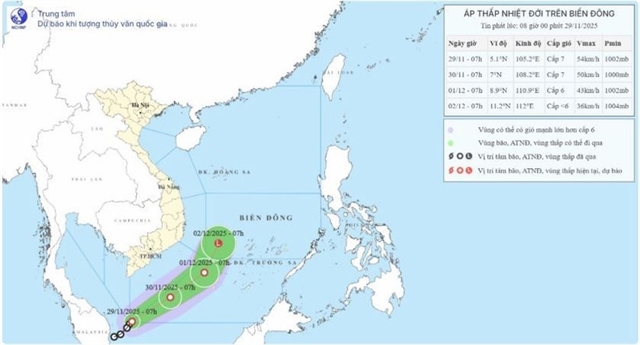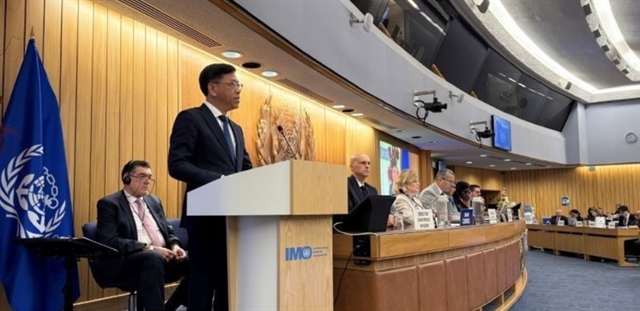 Politics & Law
Politics & Law

The third session of the 14th National Assembly (NA) spent the entire Friday morning discussing the (revised) draft Law on Public Debt Management, for the first time.
 |
| NA deputy Trần Hoàng Ngân of HCM City raises his voice about public debt during the 3rd seating of the current 14th National Assembly on Friday. — VNA/VNS Photo Phương Hoa |
HÀ NỘI – The third session of the 14th National Assembly (NA) spent the entire Friday morning discussing the (revised) draft Law on Public Debt Management, for the first time.
Deputy Trần Hoàng Ngân of HCM City said Việt Nam’s public debt has risen sharply over the past few years, from 50 per cent of the GDP in 2010 to the current 63.7 per cent.
“That public debt is rising fast, the pressure on repayment of government debt is getting higher, and the government has to increase borrowing has collectively increased the demand for capital in the market, which in turn raises the interest rate of credit,” Ngân said. “Not only bad debt, public debt also contributes to rise in interest rates.”
By late 2015, public debt was 62.8 per cent of the GDP. The NA’s Resolution 25/2016/QH14 on the nation’s financial plan for the 2016-20 period has set a public debt ceiling of 65 per cent of the GDP. “This is to say that the remainder for this year is around 2.2 per cent of GDP,” Ngân said.
Currently, the demand for public investment and investment in infrastructure is pretty huge, but in comparison, the limit for public debt is quite narrow, he said. “Thus, the management, inspection, supervision and risk management of public debt to ensure public debt safety are essential.”
Ngân noted that increased public debt is not just because of the inappropriateness of the Law on Public Debt Management, there are several other reasons as well, including increased demand for public expenditure, and budget overspending.
“On average, in the past five years, overspending of the state budget has reached 5.8 per cent of the GDP, which is contrary to the target to keep the State budget overspending under 4.5 per cent of the GDP.”
“Additionally, low public investment efficiency, uncontrolled economic growth, and prolonged implementation of public investment projects also increased public debt,” he said.
Ngân recommended that public debt must be made public and updated regularly rather than only quarterly or annually, or when an NA session convenes.
He suggested that the Law on Public Debt Management must be considered in relation to other laws such as the State Budget Law, the Law on Public Investment, the Law on Management and Use of State Property, and the Law on Organisation of the Government, so as to better monitor budget spending and make optimal use of revenue sources.
The restructuring, rearrangement, merger, dissolution and equitisation of State-owned enterprises, especially loss-making ones, must be speeded up, he said.
“Public debt and public investment must be incorporated, and public investment must be focused, efficient, profit-making and pervasive so that we can balance debt. If public debt is under control, it will be managed more easily.”
Ngân pointed out that public debt management was the responsibility of the political system.
“Local authorities must be held responsible for their locality’s debt,” he said.
Deputy Phạm Phú Quốc of HCM City shared similar views. "It is necessary to define the responsibility of bodies, organisations and individuals in managing and using public debt," he said.
Minister of Finance Đinh Tiến Dũng said that there were risks involved in the implementation of investment projects, especially those that use government loans and government loans with guarantee, as if they were unable to pay back the debt, the government had to bear the burden.
In a report to the NA on Friday morning, minister Dũng, a member of the Drafting Committee for the (revised) draft Law on Public Debt Management, said "ground reality indicates there is a lack of connection between investment decisions and obligations to pay debt".
The minister emphasised the need to restructure the State budget and public debt, perfect institutions, wholly control risks and ensure public debt safety.
“The revised Law on Public Debt Management is essential to improve the efficiency of public investment and secure public debt, whilst keeping the legal system consistent,” he said.
Besides shortcomings in the management of public debt that Ngân spoke about, Dũng said weaknesses in the management and use of loans, and the allocation of capital sourced from public debts remain unfocused and inefficient.
Compared to the Law on Public Debt Management, which was promulgated in 2009 and came into effect a year later, the revised law has three additional chapters with 18 articles. Of the total 49 chapters in the 2009 law, 44 have been amended. — VNS




